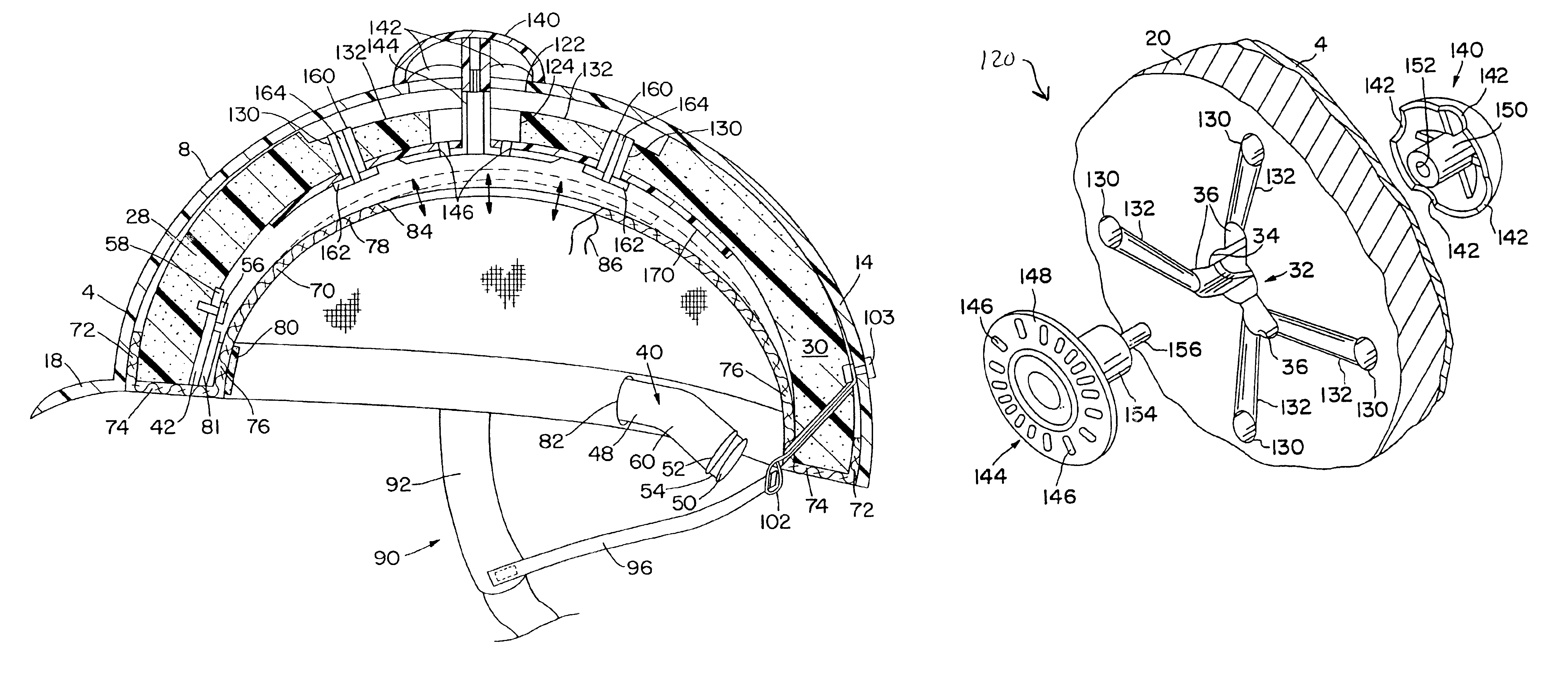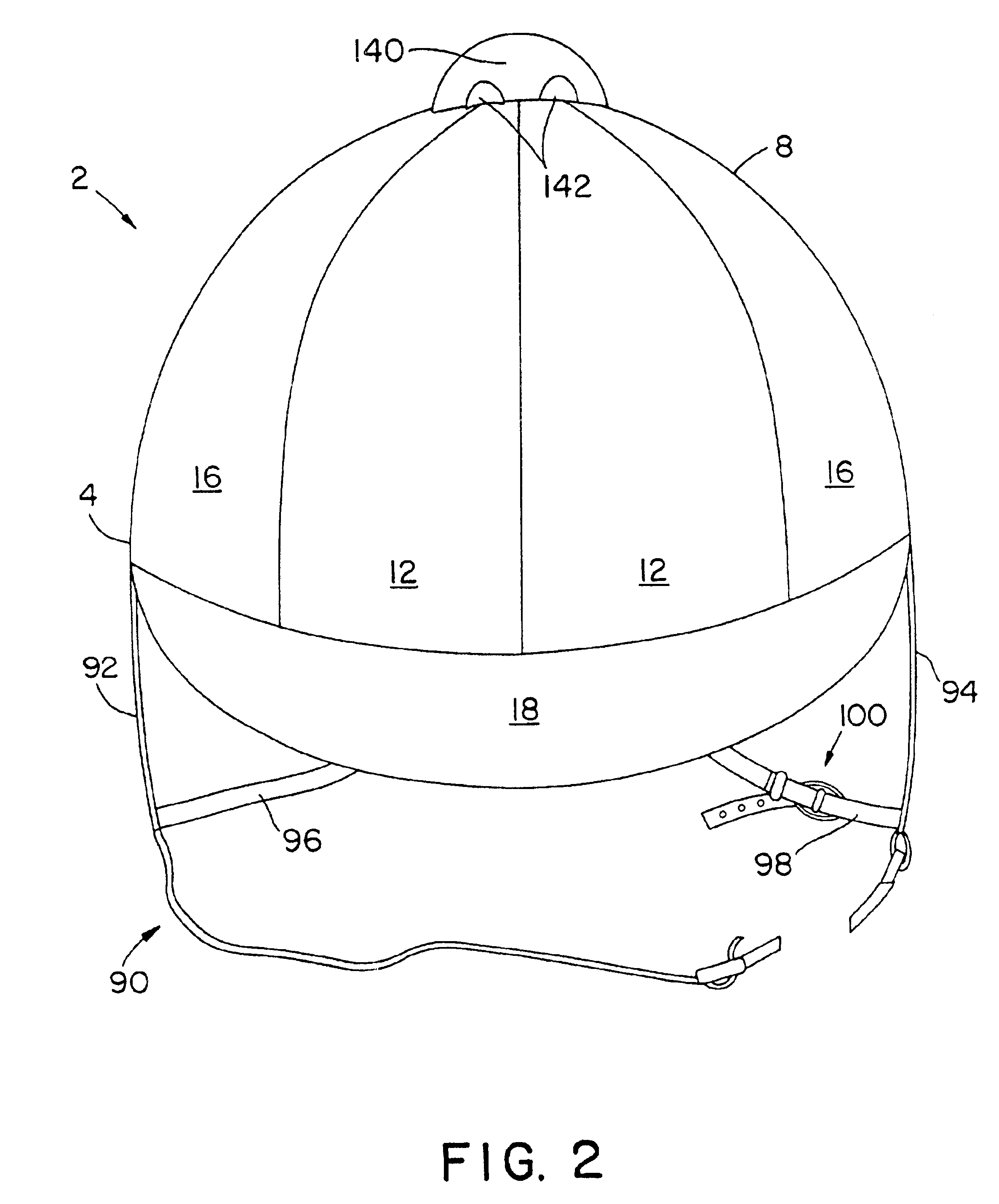Headgear
a headgear and protective technology, applied in the direction of protective garments, headwear caps, hats, etc., can solve the problems of too large headgear, too small headgear, and not being comfortable for wear,
- Summary
- Abstract
- Description
- Claims
- Application Information
AI Technical Summary
Benefits of technology
Problems solved by technology
Method used
Image
Examples
Embodiment Construction
[0034]Referring now to the drawing figures in which like reference numerals indicate like elements in all of the several views, FIGS. 1-4 illustrate a headgear 2 that is shaped and configured, by way of example only, to function as an equestrian show helmet. The headgear 2 includes an impact resistant outer shell 4 formed to cover a wearer's head and provide a tough, durable exterior surface of the headgear. The outer shell 4 has a continuous lower rim 6 and a hollow dome 8 extending from the lower rim 6 to a central crown 10. The lower rim 6 and the dome 8 collectively define a forward portion 12, a rearward portion 14, and lateral portions 16 of the outer shell. In the illustrated equestrian helmet configuration, the lower rim 6 extends along the bottom of the forward portion 12 of the outer shell 4, thence rearwardly along the bottom of the lateral side portions 16 of the outer shell, and thence further rearwardly and downwardly along the bottom of the rear portion 16 of the oute...
PUM
 Login to View More
Login to View More Abstract
Description
Claims
Application Information
 Login to View More
Login to View More - R&D
- Intellectual Property
- Life Sciences
- Materials
- Tech Scout
- Unparalleled Data Quality
- Higher Quality Content
- 60% Fewer Hallucinations
Browse by: Latest US Patents, China's latest patents, Technical Efficacy Thesaurus, Application Domain, Technology Topic, Popular Technical Reports.
© 2025 PatSnap. All rights reserved.Legal|Privacy policy|Modern Slavery Act Transparency Statement|Sitemap|About US| Contact US: help@patsnap.com



